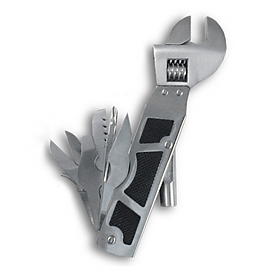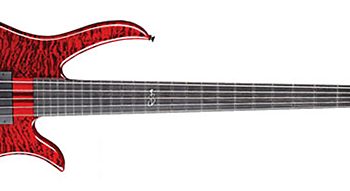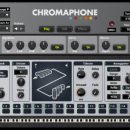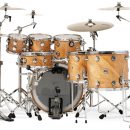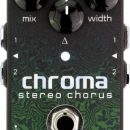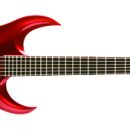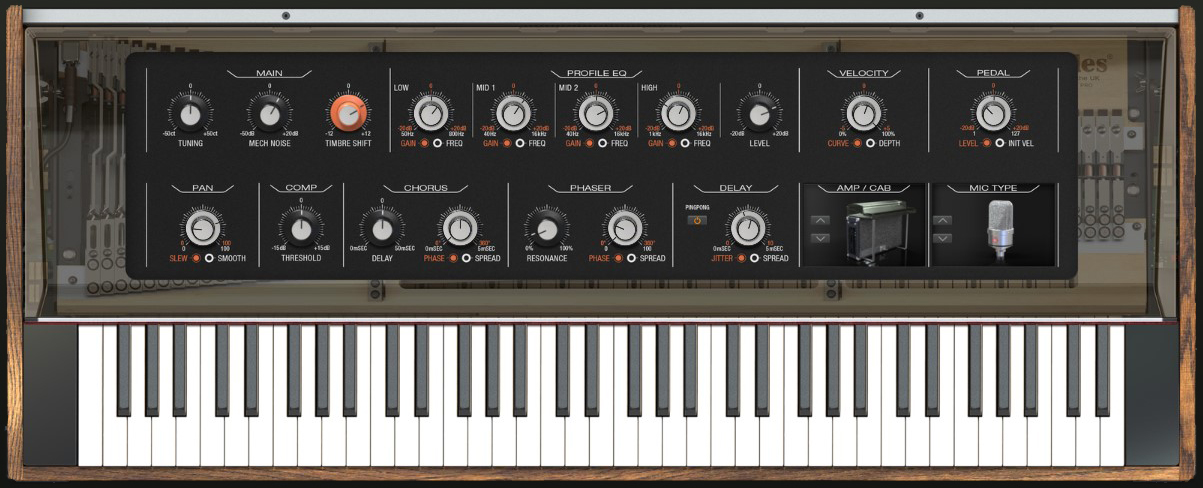Throughout the years, Peavey has produced a wide variety of high-quality, affordable, American-made basses such as the T40 and T20 series, Patriot, Foundation, Dyna, Fury, and the brand’s flagship instrument, the Cirrus. These instruments have graced stages and studios in the hands of thousands of working musicians, including such heavyweights as Jeff Berlin, Ross Valory (Journey), Rudy Sarzo (Quiet Riot/Whitesnake) and John Taylor (Duran Duran). There’s clearly something special in these Mississippi-bred instruments.
John Taylor’s instrument of choice has finally been re-issued after a long absence from the marketplace: the Peavey Cirrus 4. The Cirrus bass was first released in 1997 as Peavey's flagship bass guitar, but in 2009, mass production ended and the instruments were only available as custom-order products from Peavey’s custom shop. In 2016, however, Peavey announced that thanks to customer demand, they would be reissuing the flagship Cirrus bass guitar line. Although most Peavey instruments (including the Cirrus) are now manufactured in Indonesia, nothing seems to have been lost quality-wise.
| Category | Value | Rating |
| Features | 20% | |
| Usability | 25% | |
| Sound | 25% | |
| Documentation & Support | 10% | |
| Price | 20% | |
|
|
||
| OVERALL RATING = 3.3 Stars
3.6 stars or better: Outstanding, WIHO Award |
||
After playing the Cirrus 4 bass, we can see why this bass was brought back into production by Peavey and sits atop their product line. The Cirrus 4 has a fast and sleek neck well suited to pop and rock styles, as well awesome sound and tonal versatility. The EQ controls enable you to dial in so many different sounds that you can conjure up everything from traditional, bass-heavy sounds to a more Geddy Lee/Chris Squire, bright and trebly type of tone. If you need a fast-playing bass with a broad palette of sounds, then this is one bass you should definitely check out.
Features
The Cirrus 4 is available with a few different wood tops, and the subject of this review is the Cirrus 4 Red Oak. As the name implies, the top is cut from red oak, but the actual body wings are made from alder. Besides this classic, natural wood finish, one of the other aesthetics we really like about the Cirrus 4 is the nice “C” symbol etched into the fret board at the 12th fret.
The body is carved with an extended upper horn, to help balance the instrument on a strap, and there is deep cutaway which provides easy access to all twenty-four frets. You’ll find those frets adorning a neck-through construction, maple/mahogany neck and a Pau Ferro (like rosewood) fretboard. The neck is 35-inch scale and has a two-way, fully adjustable, truss rod. Other neck specs are as follows: 12.6” radius, 1.57” width at nut, and 2.50” width at the last fret. The thickness at the first fret is .807” and the thickness at the twelfth fret is .905”. Yes, this is a thin neck! The Cirrus 4 is decorated with satin gold hardware that includes a milled, top-loading, bass bridge and 20:1 ratio Gotoh GB720 tuning machines.
 |
In the electronics department, the new Cirrus 4 features two Peavey USA-designed, VFL active humbucking pickups, an active preamp, and 18-volt electronics. The preamp provides controls for volume, pickup blending, and 10db of boost/cut for the bass, midrange, and treble frequencies. These controls allow for a large range of tones suiting a variety of styles.
One of the coolest features on this bass is the Peavey patent pending Power Plate located on the back of the head stock, which is designed to provide greater sustain and eliminate dead spots.
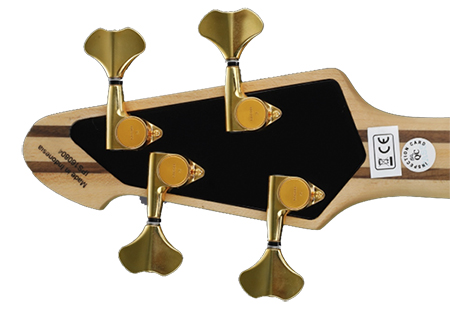 |
The bass comes out of the included hard case set up with DR Dragonskin bass strings. Cirrus models are currently available as both four- and five-string versions and come in various colors/wood types: Walnut, Red Oak, Tiger Eye, and Bubinga (4 string only).
Usability
Overall, we found the Cirrus 4 bass relatively easy to play. The factory setup enabled us to really dig into the Cirrus’ thin/fast neck. The action was set low straight from the factory, and the string tension was quite comfortable: it didn’t even feel like we were playing in standard tuning. With its thin neck, the Cirrus suits players who like to move freely around the neck and incorporate a variety of techniques such as slapping, popping, and percussive playing.
Speaking of string tension, we have to talk about the neck’s scale length, which will be the only polarizing thing about the instrument for some players. At 35” instead of the typical 34” scale length, the bass is particularly adept at dropped tuning the E string without getting flubby, but the tradeoff is that this longer scale neck just isn’t as natural feeling to play on as typical 34” scale instruments. The extended scale length makes more sense on a five-string bass with a low B string, but for playing a four-string in standard tuning, we wish Peavey would have gifted this bass a 34” scale length. The neck is easy to hold and move around on, certainly, but the difference in reach was clearly noticeable to us, hindering our personal comfort with this otherwise fantastic-playing instrument.
The bass is equipped with five control knobs, all of which were rather easy to use once we learned what each control did. The volume knob controled overall volume for both active pickups. The pickup blend control allowed us to manipulate each of the VFL active humbucking pickups, while the tone controls made it easy to adjust the tone from subtle EQ tweaks to more pronounced sound sculpting.
Sound
We tested the Peavey Cirrus 4 through a Hartke HA 3500 Head and Carvin 4x10 speaker cabinet. The equalization on the bass head was set flat and the bass and treble settings were set to 12:00. All equalization was adjusted using the treble, mid and bass controls on the bass itself.
When it comes to sound, the Cirrus 4 bass is capable of producing a wide variety of great tones. The bass has a fat/full sound when played with both humbuckers on, but when you roll off the bridge pickup and favor the neck pick up, you get an even larger, heavy bass sound. Roll off the neck pickup and you get more of a high end/treble type sound.
We found it best to first play around with the humbucker blending control knob to find a sound we liked, and then we began tweaking the bass, mid, and treble controls to our liking. The Peavey VFL pickups were noise-free and provided plenty of clarity and wide dynamics for our playing. This is an enticing bass guitar for players of pop music or progressive rock and fusion, where a clean, pristine tone is desired over vintage noise.
The maple/mahogany neck and alder body combination allows for some bright sounds! When we first played this bass unplugged, we were taken by just how bright the maple neck sounded on its own. If you are a bass player who likes to slap and pop, you will love what the Cirrus can do, as this kind of playing flies effortlessly out of the bass. The milled brass bridge, neck through construction, and Power Plate on the back of the headstock combine to provide notable sustain qualities.
Documentation and Product Support
The manual is downloadable from the Peavey website and contains basic instrument specs. There is a photo identifying the controls, and general information about the pickups, but no specific care or adjustment information.
Price
The Peavey Cirrus 4 Bass (MSRP $1,299) sells for approximately $999 including a hard case. This is a good price for Peavey’s flagship instrument. If you don’t mind the slightly longer scale neck, there simply isn’t anything at all to fault here. It sounds and plays as good as it looks.
Contact InformationPeavey
www.peavey.com


